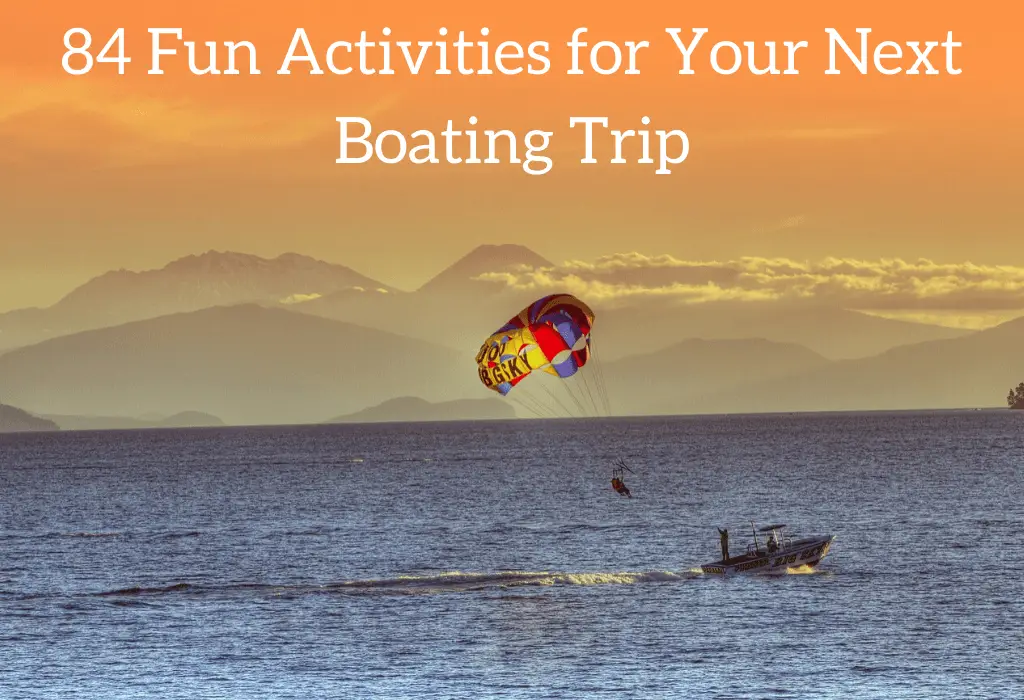A houseboat is often considered one of the most beautiful and luxurious modes of residence or transportation there ever was. Most importantly, if you’re looking to buy one, then although it would be ideal to opt for one which has all its features intact, it can be extremely expensive.
*This post may contain affiliate links. As an Amazon Associate we earn from qualifying purchases.
Thus, it is suggested that you buy the boat and then put in additional features on your own making it cost much less while also getting everything that you want on it.
Many people have even taken to building a houseboat from scratch all by themselves or with the help of a few friends to seriously save some money. Having said this, it is necessary to know the ideal way to build a houseboat hull, something which this article will explain to you – so read on!
What is a hull used for?
A hull is usually seen on a typical houseboat which is seen to be mostly submerged below the waves that aids the boat in movement in the water and helps to carve out the direction.
The hull is specifically designed to hold the weight of your entire houseboat including passengers and all of your personal items. It is essentially what your houseboat is built on top of and floats on.
How many kinds of houseboat hulls are available?
There are houseboats which contain a single hull and those which contain two hulls. These hulls can be constructed from a variety of materials including wood, steel, aluminum, fiberglass, and more.
Houseboat hulls can also have a variety of shapes but the one thing they all have in common is that that are designed for slow movement and not designed to sit far above the waterline!
What does a single hull houseboat do?
A houseboat which has a single hull typically has the hull in a curved shape which helps the boat to move about in the water smoothly and is ideally designed for boats that have the capability to pick up speed and can maneuver easily in a variety of waters.
What does a double hull houseboat do?
A houseboat which usually contains two hull extrusions is designed with a pontoon base and is comparatively wider in the water. This style of a houseboat is ideal for slow cruising through waterways and also provides for less maneuverability as well as speed.
Why is a houseboat hull necessary?
The main reason behind having a houseboat hull is so that the many areas which are inside the hull allow you to put all of the required rooms and functions that a houseboat needs such as fuel, water tanks, and more.
Also and certainly more important the hull is what allows your houseboat to float properly so it can be used on the water. Without a hull for your houseboat you will not be able to float on the water at all!
Which is the best material to build a hull and why?
The three major types of materials which are typically used when building a houseboat hull. Those three most often used materials are: fiberglass, steel and aluminium.
Houseboats many years ago were built with wooden hulls but that is rarely done anymore as they don’t stand up as well to the weather.
Pros and cons of a fiberglass hull
- A fiberglass hull is corrosion resistant
- It has an amazing ability to absorb sound and also has the ability to tone down vibrations
- It contains special epoxy as well as vinyl ester coatings that prevent blistering (something which was a major concern back in the day)
- It ensures quality consistency as it makes use of the same mold – ranging from one hull to the next one
- Repairing a hole or a crack in a fiberglass hull isn’t that difficult and can easily be ‘re-fiberglassed’ leaving behind little evidence which might suggest that there has been any damage
- Although the start-up cost is a little on the higher side, it is to be kept in mind that once the initial mold is able to set, the hulls can easily be produced quickly, in large volumes as well as inexpensively
- It provides better flexibility in design – that provides better performance, a very sharp finish as well as sleek contours
- It provides less flexibility in modifying special types of houseboats, since a new mold has to be built every time, for every new style of hull
- It is comparatively more expensive than an unfinished aluminium hull, even though an aluminium hull might end up being more expensive if it is finished properly
Pros and cons of an aluminium hull
- In comparison to fiberglass and steel, it is a much lighter material
- It is often considered the most widely used material for building houseboat hulls
- It costs much less to fabricate, in comparison to a fiberglass hull
- Its material costs are more upfront in comparison to steel
- Unlike steel, it doesn’t have any problem with rusting
- Its damages, cracks and holes are comparatively easier to repair and restore
- Unlike fiberglass which can easily leave behind a clean finish after repairing, aluminium might leave behind some signs of the repair afterwards.
- It has much less strength than a steel hull, but its weakness can be minimized with the help of proper designing as well as bracing
Pros and Cons of a steel hull
- In comparison to its aluminium and fiberglass counterparts, it is quite a bit stronger
- It weighs around 20% more than an aluminum hull, which in turn adds onto the fuel costs
- Its heavy weight ensures a lower center of gravity which in turn provides for better tracking as well as stability
- Rusting can be a major concern, especially in boats which are not maintained properly
- It has the ability to stretch up to 30%, before going having a tear or a fracture in the material.
- It has flame resistant properties, which is why it is often considered an excellent choice with regards to fire safety measures
- It provides excellent stability which is considered an ideal property if you are looking for long-ranging cruising
These are the three primary materials using which a houseboat hull is usually made of. From these three, the fiberglass one is often considered the best, because of various factors, as have been listed above. The steel and aluminium hull types aren’t really bad but then they too have their drawbacks, similar to the fiberglass hull.
Thus, it is necessary to keep in mind all the factors – both positive and negative, before choosing one and starting work on your hull.
Also, keep in mind where exactly you’re planning on taking your houseboat, because that in-turn will determine which material hull and how many, single or double hulls, should be used for your houseboat. There is also an option to opt for tri-hull houseboats, which basically allow for three mini hulls to be built in the form of one large hull. This is to provide channels which will allow the water to flow back out if necessary.
Conclusion
No matter which type of hull you choose when building your houseboat you should always be careful that any hull you purchase or use is in the best condition possible. Often you can buy a used hull for far cheaper than having a new one built but if it is in bad shape it might be better to spend the money and get a hull that will last you much longer.









